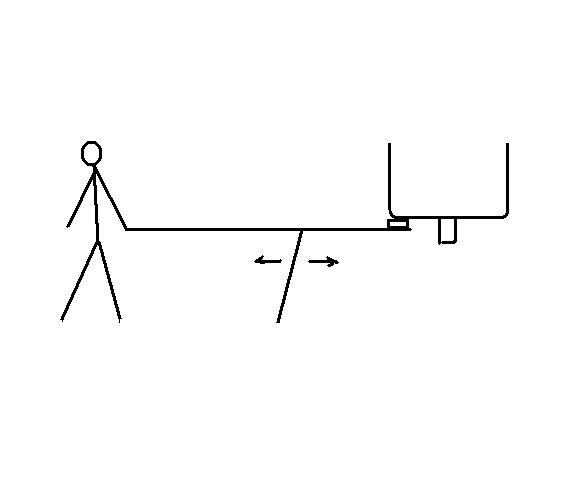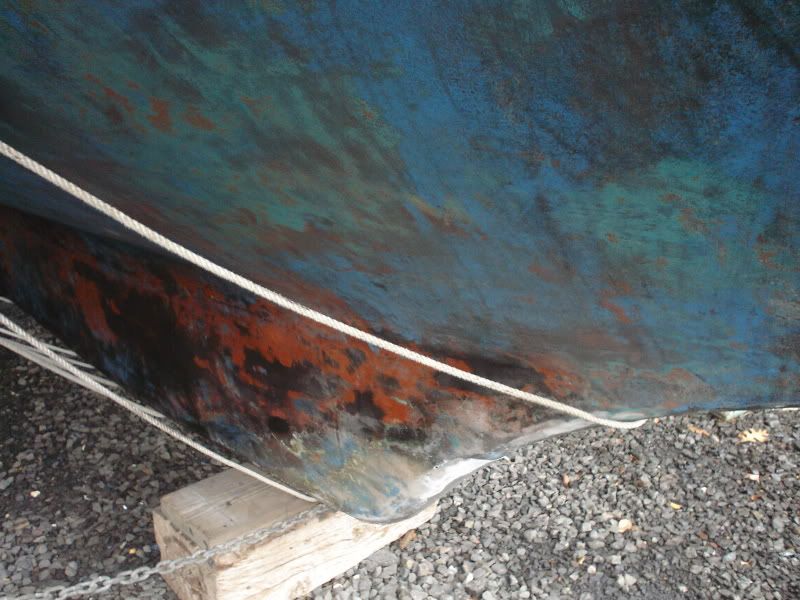The fastest and dirtiest method I saw was a hired hand dressed in a hazmat suit and professional breathing filter, take it all off with a rotating disc sander, as I saw the painting team use on my house exterior shingles last year. It took off the paint superfast but filled the area with copious amounts of dust and left deep swirls on the boat bottom.
Saw the majority of folks using scrapers - from cheap paint supply scrapers to special order giant double grip monsters - with varying measures of success.
The biggest issue seemed to be fatigue - especially when the scraping needed to be done upside down or near to it, i.e. anything higher than the vertical surfaces on the keel. It is just a bear to apply the pressure needed by pushing up, to get the scraper to work.
It also became clear to me that the weight of the scraper, or lack thereof, definitely was a variant in it's effectiveness - a light scraper would stop when it bumped against a ridge, or change in surface, while a heavier one would have a little more inertia and continue on a while further.
Based on my observations - for what it's worth, I decided on using a heavy chisel - sometimes referred to as a "Boat Slick"

Took the handle off and stuck an even longer handle in the tapered receiver as is shown in the pick above (believe it or not - the ones in the picture are small baseball bat size). The cutting edge of the chisel is as wide as the blade of a good size scraper; the new handle (I stuck the chisel on the 5' handle of a garden ho) and the chisel combined had a nice weight to it which helped me to push through multiple layers of old bottom paint.
Then to assist in the upside down scraping, I added a second stick with a flat top to it, on which I rested the center (lenght) of the chisel-stick - close to mid point or elsewhere, depending on where I was scraping and what kind of angle/leverage I was seeking - thus creating a see-saw and allowing me to stand next to the boat, pushing down on the end and move the contraption back and forth thus pushing the cutting edge of the chisel up against the paint at almost zero angle. This worked very well, even on surfaces close to vertical (if you put the hinge point stick on a 45 degree angle away from the vertical surface, the see-saw action will still apply pressure on the chisel while you move (with your whole body) the entire assembly back and forth to scrape off the paint). The surface under the bottom paint proved hard enough to stop the chisel from digging into glass - except for maybe 15 or so small gauges that were taken out - less than 1/8th" deep.
I found that, being able to stand most of the time, rather than having to position myself either kneeling or crouching near or even under the boat… and pushing down on a stick with considerable leverage (varying based on where the hinge-point was selected) I was able to do the entire surface in less than two whole days work…. With the added benefit that my face (think air intake, dust in eyes, ears, nose, etc.) was further away from the surface being scraped that it would have been, had I used the popular hand scraper.
I used the same method when I sanded the boat afterwards – coarse sandpaper on a ceiling pad on a stick with the additional leverage stick as described above.
Of course, YMMV, but, hey, it worked for me….

